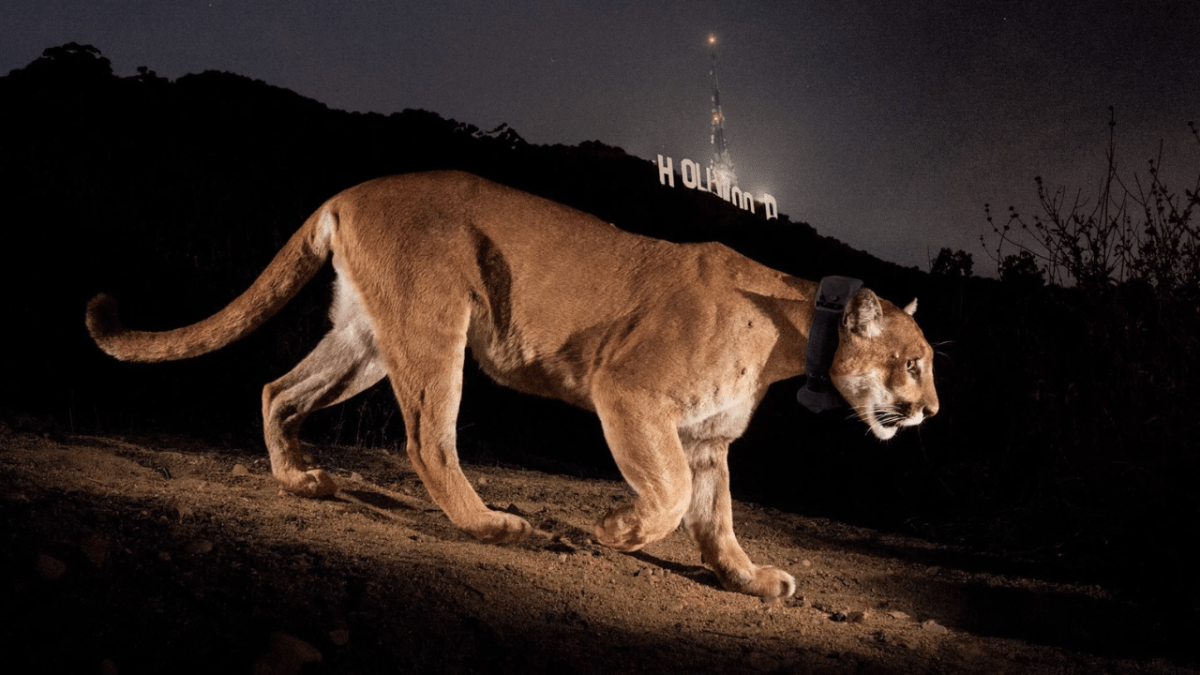Tribal leaders, scientists and conservation advocates buried Southern California’s most famous cougar on Saturday in the mountains where the big cat once roamed.
Having called urban Griffith Park, home of the Hollywood sign, home for the past decade, P-22 he has become a symbol of California’s endangered cougars and their dwindling genetic diversity. The cougar’s name comes from feline number 22 in a National Park Service (NPS) study.
The cougar’s death late last year sparked debate among Los Angeles-area tribes and wildlife officials over whether scientists could save samples of the cougar’s remains for future use. testing and research.
The death of the legendary P-22 cougar has left an emotional shock to the people of Los Angeles. Since his death, tributes to his memory have begun and today a mural created by renowned artist Paul Jimenez was unveiled in East Los Angeles.
Some representatives of the Chumash, Tataviam and Gabrielino (Tongva) peoples have argued that the samples taken during the autopsy should be buried with the rest of his body on the ancestral lands where he spent his life. Some tribal elders said keeping the specimens for scientific testing would be disrespectful to their traditions. Cougars are considered parents and teachers in tribal communities in Los Angeles.
Tribal officials, wildlife officials and others have discussed a possible compromise in recent weeks, but no consensus was reached before the P-22 was laid to rest Saturday at an unspecified location in the mountains of Santa Monica.
“Although we have done everything we can to keep the carcass intact, the tribes and agencies involved are still working to come to a conclusion on some of the samples,” the state Department of Fish and Wildlife said Monday in a statement. . “What is important to understand is that the tribes and agencies involved have agreed to carry out the burial and it was a moving ceremony. We have reached a better place of understanding and look forward to continuing our growth from there.
It was unclear if unspecified samples could also be buried with the animal in the future or if the tribes agreed to allow scientists to keep some specimens for further testing.
Saturday’s traditional tribal burial included singing, prayers and sage smudging, according to Alan Salazar, a member of the Fernandeña Tataviam Band of Mission Indians and a descendant of the Chumash tribe.
The Los Angeles County Museum of Natural History, where the puma’s remains were kept in a freezer before burial, called the burial a “ceremony of historical significance”.
Photos: P-22, the famous “Hollywood cat”
“P-22’s death touched us all and he will always be a revered icon and ambassador for wildlife conservation,” the museum said in a statement Monday.
Salazar, who attended the ceremony, said he believes the legacy of the P-22 will help wildlife officials and scientists realize the importance of being animal-friendly in the future.
Beth Pratt, California executive director of the National Wildlife Federation who also attended the ceremony, wrote on Facebook that the burial “helped me find peace” as she mourns the death of the animal.
The Wildlife Bridge on the 101 Freeway northwest of Los Angeles is designed to provide more space for cougars and other animals to roam in the sprawl.
“I can also imagine P-22 at peace now, with such a powerful and loving farewell to the next place,” he wrote. “As we were laying her down, a red-tailed hawk flew overhead and cried out loud, possibly there to help her on her journey.”
Los Angeles and Mumbai are the only major cities in the world where big cats have been a regular sight for years (cougars in one, leopards in the other), although cougars have started roaming the streets of Santiago, Australia. Chile, during pandemics.
Wildlife officials believe P-22 was born about 12 years ago in the mountains west of Santa Monica, but left due to her father’s assault and her own struggle to find a mate in the midst of a declining population. This led the cougar to cross two busy highways and migrate east to Griffith Park, where a wildlife biologist captured it on a trail camera in 2012.
His journey on the highways inspired a wildlife crossing on a Los Angeles area freeway which will allow big cats and other animals to pass safely between the mountains and the northern wilderness. The bridge began construction in April.
P-22 was captured last December in a residential yard after dog attacks. Examinations revealed a fractured skull, resulting from being hit by a car, and chronic illnesses, including a skin infection and kidney and liver disease. The most popular feline in town was euthanized five days later.
Los Angeles celebrated his life last month at the Greek Theater in Griffith Park in a star-studded memorial that included musical performances, tribal blessings, speeches on the importance of P-22 wildlife life and conservation, and a video message from Governor Gavin Newsom. .
To honor where the animal called home amidst the city’s sprawl, a boulder was brought from Griffith Park to the grave in the Santa Monica Mountains and placed near the grave of P-22 , said Salazar.

